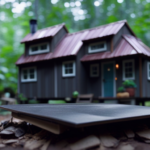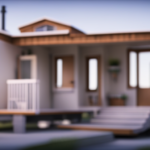Tiny Houses
What Are the Crucial Steps Involved in Building a Tiny House?

We have embarked on a journey to uncover the crucial steps in building a tiny house.
From selecting the perfect plan to sourcing materials and preparing the foundation, each task plays a vital role in creating a cozy and functional home.
With our guide, you will learn how to construct the frame, install utilities, and apply the finishing touches both inside and out.
Join us as we explore the ins and outs of this rewarding and fulfilling building process.
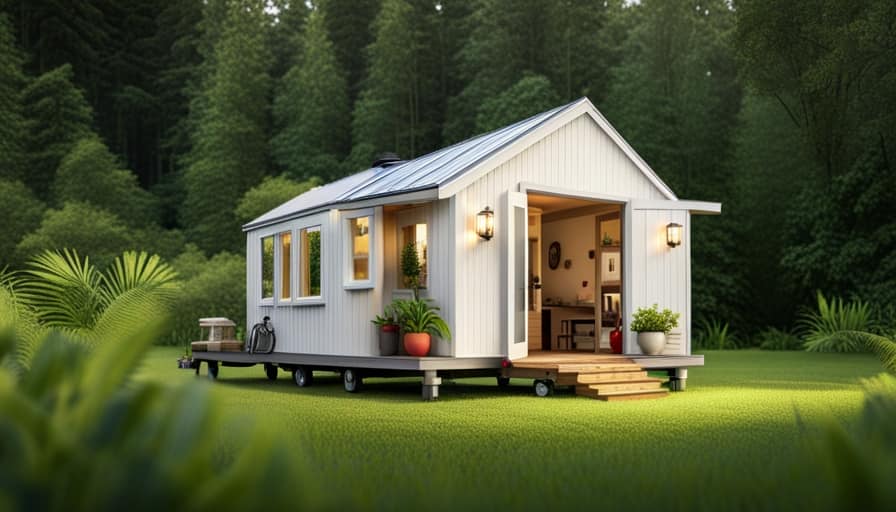
Key Takeaways
- Planning and design are crucial steps in building a tiny house, including determining the size and layout, creating a detailed blueprint, and considering factors like accessibility and sustainability.
- Foundation and framing are important for creating a sturdy base for the tiny house, including choosing a suitable foundation type, calculating weight-bearing capacity, and installing insulation for energy efficiency.
- Electrical and plumbing systems need to be carefully designed and installed, including considering power needs, installing wiring and outlets, and planning for water supply and waste management.
- Interior finishes and features play a significant role in maximizing space and comfort, including choosing durable materials, installing efficient heating and cooling systems, and incorporating multi-functional furniture.
Choosing a Tiny House Plan
Now let’s talk about the next step in building our tiny house: choosing a tiny house plan.
The design of our tiny house is crucial as it determines the layout, functionality, and overall appeal of our future home. When selecting a tiny house plan, it’s important to consider our specific needs and preferences.
We should think about the number of rooms, storage space, and any unique features we desire. Additionally, budgeting considerations play a significant role in this decision. We must ensure that the chosen plan aligns with our financial resources, as certain designs may require more expensive materials or complex construction techniques.
By carefully evaluating various tiny house designs and considering our budget, we can make an informed decision that satisfies both our practical and aesthetic requirements.

Now that we’ve chosen our tiny house plan, the next step is sourcing the materials we’ll need.
Sourcing Materials
To build our tiny house, we’ll need to source the materials and gather all the necessary supplies. Sourcing materials is a crucial step in the construction timeline, as it ensures that we’ve everything we need to bring our vision to life.
We can start by creating a detailed list of all the materials required, such as lumber, insulation, roofing, windows, and doors. Once we’ve our list, we can begin researching suppliers and comparing prices to find the best deals. It’s important to consider both the cost and quality of the materials to ensure that our tiny house is built to last.
Foundation Preparation
When it comes to foundation preparation for a tiny house, there are three crucial points to consider.
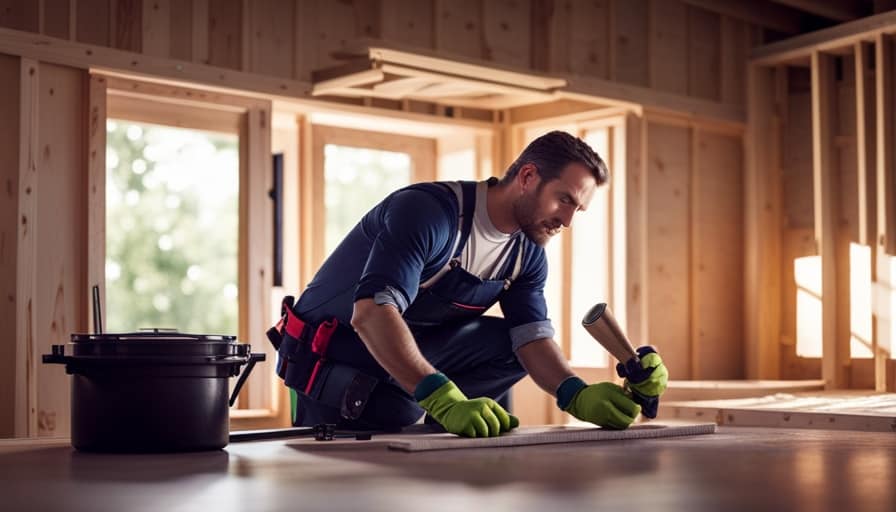
Firstly, soil testing and excavation are essential to ensure the stability and strength of the foundation.
Secondly, choosing the right materials, such as concrete or gravel, is crucial for a solid and durable foundation.
Lastly, ensuring proper drainage is vital to prevent water accumulation and potential damage to the foundation.
Soil Testing and Excavation
We always start by conducting soil testing and excavation to prepare the foundation for our tiny house. Soil testing methods are crucial in determining the composition and stability of the soil. This information helps us design a suitable foundation that can support the weight of the structure. We use various techniques such as taking soil samples and conducting laboratory tests to analyze the soil’s characteristics, including its moisture content, density, and load-bearing capacity.

Excavation techniques are then employed to remove any unsuitable soil and create a level surface for the foundation. This involves using heavy machinery, such as excavators, to dig the required depth and width for the foundation. Excavation also allows for the installation of underground utilities, such as plumbing and electrical lines, before the foundation is constructed.
Choosing the Right Materials
Our first step in foundation preparation is selecting the right materials for our tiny house. When choosing the materials, it’s important to consider both sustainability and cost. Here are some key considerations:
-
Sustainable options:
-
Recycled materials: Using reclaimed wood or recycled steel can reduce the environmental impact of our tiny house.

-
Eco-friendly insulation: Opting for insulation made from natural materials, like cellulose or sheep’s wool, can improve energy efficiency while minimizing harm to the environment.
-
Cost considerations:
-
Budget-friendly materials: Selecting affordable options like plywood or concrete blocks can help keep the overall cost of our tiny house down.
-
Long-term durability: Investing in high-quality materials might have a higher upfront cost but can save money in the long run by reducing maintenance and replacement expenses.

Ensuring Proper Drainage
One crucial step in building a tiny house is ensuring proper drainage for our foundation preparation. Proper grading and effective drainage are essential to prevent water damage and maintain the stability of the house. To achieve this, we need to carefully plan and execute the following steps:
| Steps | Description |
|---|---|
| Evaluate the site | Assess the topography and soil composition to determine the best location and identify potential drainage issues. |
| Grade the land | Level the ground and create slopes away from the foundation to direct water flow away from the house. |
| Install drainage systems | Install French drains, gutters, and downspouts to collect and redirect water away from the foundation. |
| Use permeable materials | Choose permeable surfaces, such as gravel or porous pavers, to promote water absorption and reduce runoff. |
| Maintain the drainage system | Regularly inspect and clean the drainage system to ensure it remains functional and free from obstructions. |
Frame Building
When it comes to frame building for a tiny house, there are several crucial steps to follow. Building techniques and structural design play a significant role in ensuring the stability and durability of the structure.
Here are the key steps involved in frame building:
-
Planning and Design
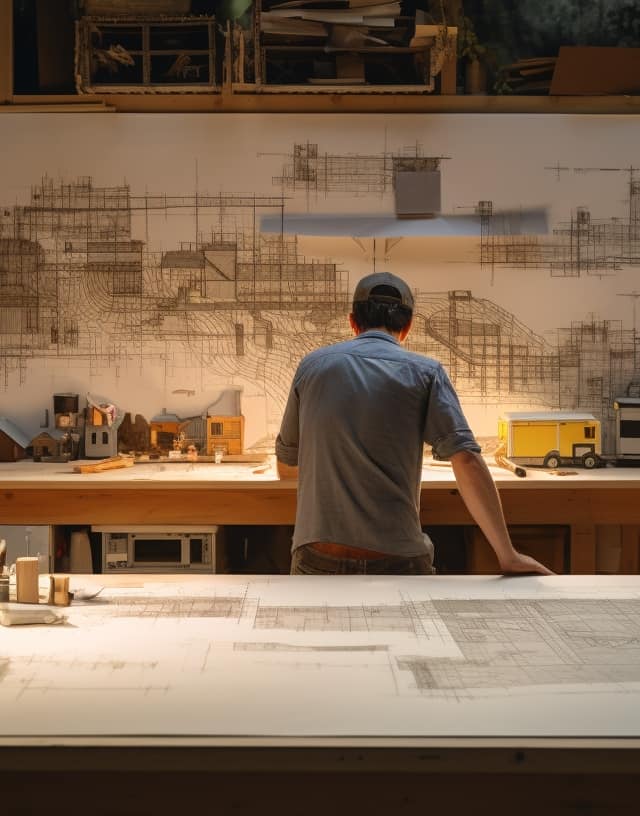
-
Determine the size and layout of the tiny house.
-
Create a detailed blueprint of the frame structure.
-
Foundation and Floor Framing
-
Prepare the foundation, whether it’s a trailer or a permanent base.
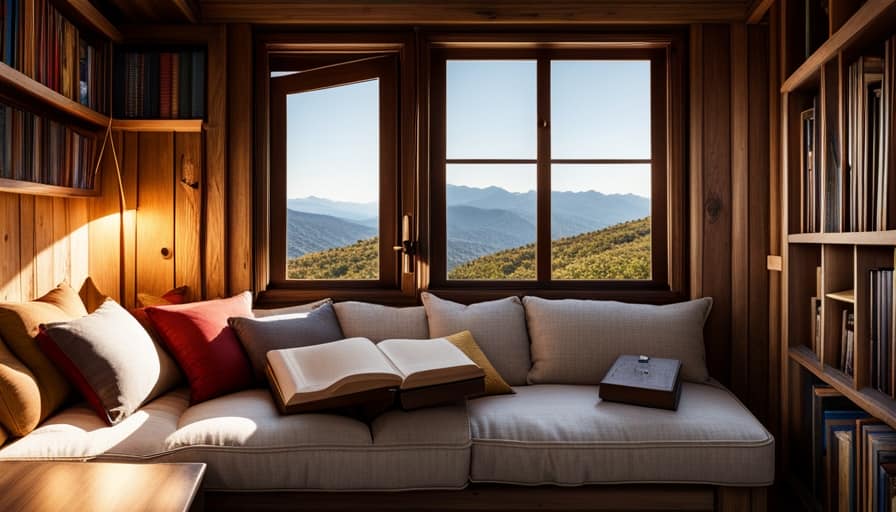
-
Install the floor joists and secure them properly.
-
Wall and Roof Framing
-
Construct the walls using appropriate building techniques.
-
Install roof trusses or rafters and sheathing.
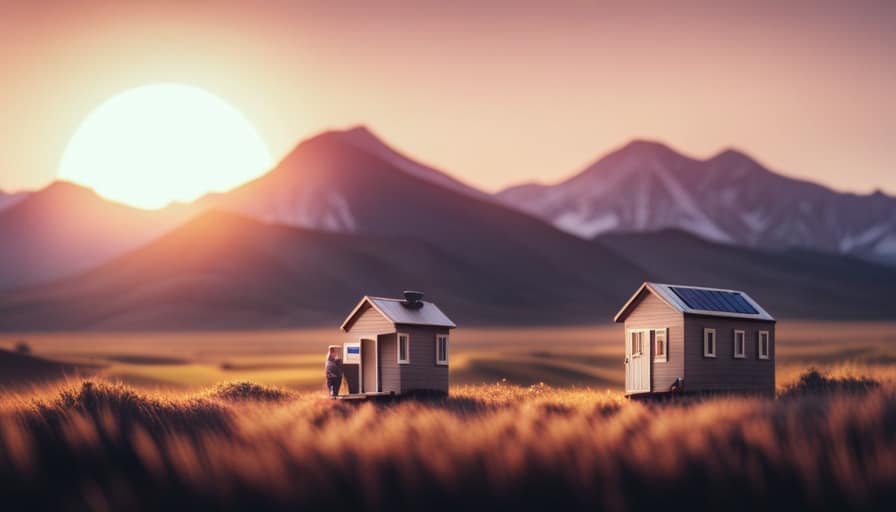
Installing Utilities
Now, let’s talk about the crucial step of installing utilities in your tiny house.
This includes setting up the water and sewage systems, as well as making the necessary electrical connections.
Ensuring a reliable water supply and proper waste disposal is essential for a comfortable living space, while electrical connections are needed to power your appliances and lighting.
Let’s take a closer look at each of these points to understand the process better.

Water and Sewage
Our first step in installing utilities for our tiny house is to determine the best location for our water and sewage systems. This involves considering factors such as accessibility, convenience, and sustainability.
To ensure clean and safe water, we’ll install a water filtration system that removes impurities and contaminants. This will provide us with a reliable source of drinking water.
For our sewage system, we’ve decided to use a composting toilet. This eco-friendly option converts human waste into nutrient-rich compost, which can be used as fertilizer for plants. It’s a cost-effective and sustainable solution that eliminates the need for traditional plumbing.
By carefully planning the location of our water and sewage systems and incorporating efficient and environmentally friendly technologies, we can create a functional and sustainable living space.

Now that our water and sewage systems are in place, we can move on to the next crucial step: electrical connections.
Electrical Connections
To ensure a reliable power supply, we will connect our tiny house to the electrical grid and install solar panels for renewable energy generation. This will not only provide us with a backup power source but also help us reduce our carbon footprint. However, it is crucial to prioritize electrical safety during the installation process. We will hire a licensed electrician to handle the electrical connections and ensure that all the wiring is up to code. Additionally, we will install a circuit breaker panel to protect our tiny house from electrical overloads. The solar panels will be strategically placed to maximize sun exposure and generate sufficient power. By combining the electrical grid and solar power, we can enjoy a steady supply of electricity while being environmentally conscious.
| Electrical Safety | Solar Power |
|---|---|
| Hire a licensed electrician | Install solar panels strategically |
| Ensure wiring is up to code | Maximize sun exposure |
| Install a circuit breaker panel | Generate sufficient power |
Interior Finishing
After completing the construction of our tiny house, we’ll move on to the exciting stage of interior finishing. This is where we get to put our personal touch on the space and make it feel like home.
When it comes to interior design, we want to create a space that’s both functional and aesthetically pleasing. Here are a couple of key steps to consider:

-
Choosing the right materials: We want to select materials that are durable, easy to clean, and visually appealing. This includes things like flooring, countertops, and cabinetry.
-
Optimizing space: In a tiny house, every square inch counts. We’ll need to carefully plan the layout to maximize storage and make the most of the available space. This could involve using multi-functional furniture, built-in storage solutions, and clever organization techniques.
Exterior Finishing
We frequently prioritize the exterior finishing of our tiny house to ensure it isn’t only visually appealing but also weather-resistant and durable.
The exterior design of a tiny house plays a crucial role in creating a welcoming and aesthetically pleasing look. It’s important to choose materials that aren’t only durable but also resistant to the elements.
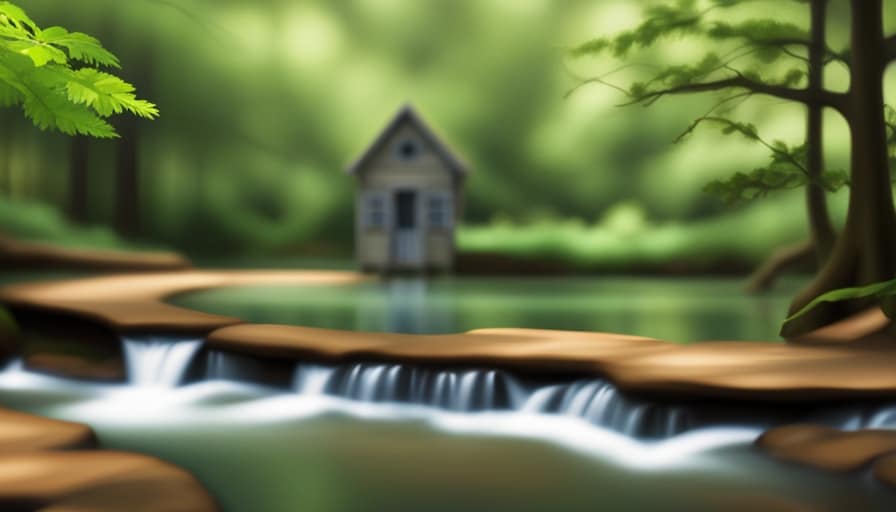
Weatherproofing techniques, such as proper insulation and sealing, help protect the tiny house from moisture, wind, and other environmental factors. Additionally, choosing the right exterior paint or siding can enhance the longevity of the house by preventing water damage and protecting against UV rays.
Investing in high-quality materials and utilizing effective weatherproofing techniques will ensure that the exterior of our tiny house not only looks great but also stands the test of time.
Common Questions and Issues During Construction
Some of the most common questions and issues that arise during construction are how many electrical outlets are needed and where they should be placed, as well as how to properly insulate the walls to ensure energy efficiency. These challenges can be addressed by considering cost and functionality.
Here are some common challenges and cost considerations to keep in mind during the construction process:

-
Electrical outlets:
-
Determine the number of outlets based on your power needs and the layout of your tiny house.
-
Place outlets strategically throughout the house to ensure easy access and convenience.
-
Insulation:

-
Choose the right insulation materials that provide maximum energy efficiency.
-
Properly insulate the walls, floors, and roof to prevent heat loss and maintain a comfortable living environment.
Long-Form Response: The Complete Tiny House Building Process
By carefully following each step in the building process, we can create our own custom-designed and fully functional tiny house.
Building a tiny house has its pros and cons. On the positive side, it offers financial freedom, environmental sustainability, and the ability to live a clutter-free lifestyle. However, it also requires careful planning, limited space, and potential zoning restrictions.
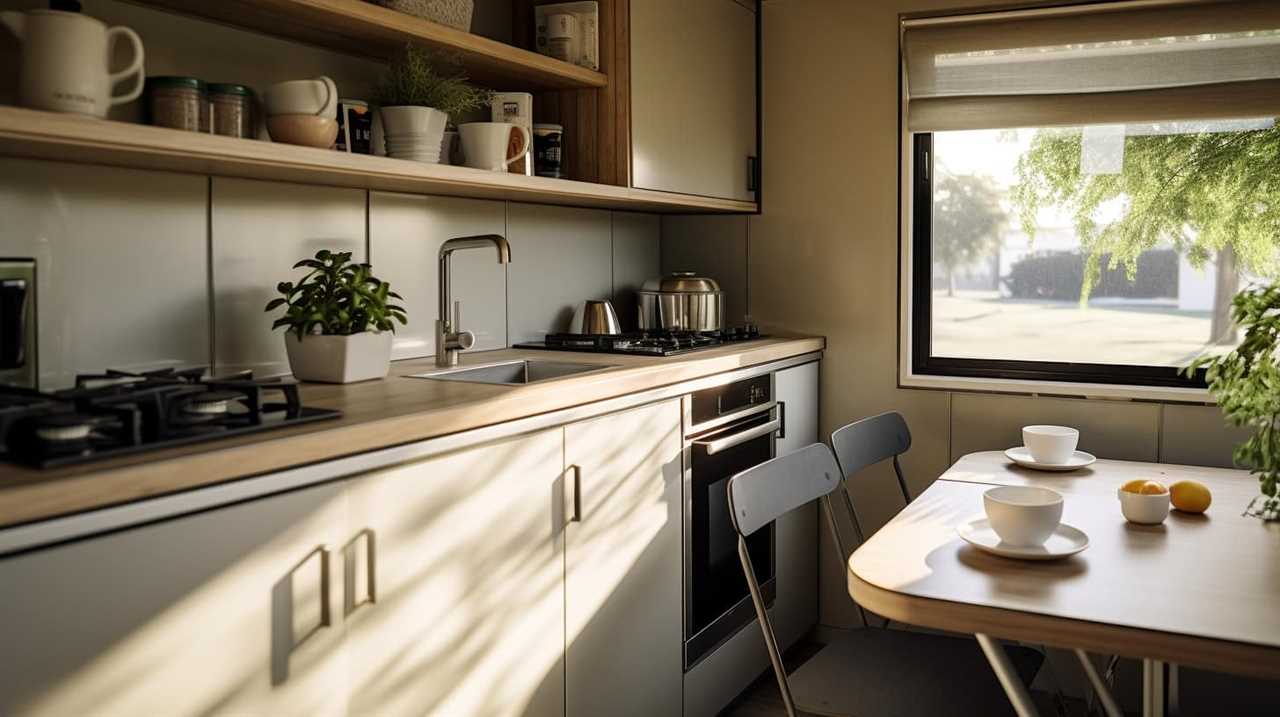
To maximize space in a tiny house, there are a few tips to keep in mind. Utilizing multifunctional furniture, such as a sofa that can transform into a bed, is essential. Additionally, incorporating storage solutions, like built-in cabinets and shelves, can help keep things organized. Using vertical space efficiently by installing loft beds or overhead storage is another effective strategy.
With proper planning and creative thinking, a tiny house can offer comfort and functionality despite its small size.
Frequently Asked Questions
What Are the Legal Requirements for Building a Tiny House in My Area?
Legal considerations and zoning regulations are important when building a tiny house in our area. We need to research the specific requirements, permits, and restrictions set by local authorities to ensure compliance and a smooth building process.
How Much Does It Typically Cost to Build a Tiny House?
When building a tiny house, it’s crucial to consider the cost. Our budgeting strategies help determine the expenses involved, ensuring we stay within our means and achieve our goal of creating an affordable and sustainable living space.
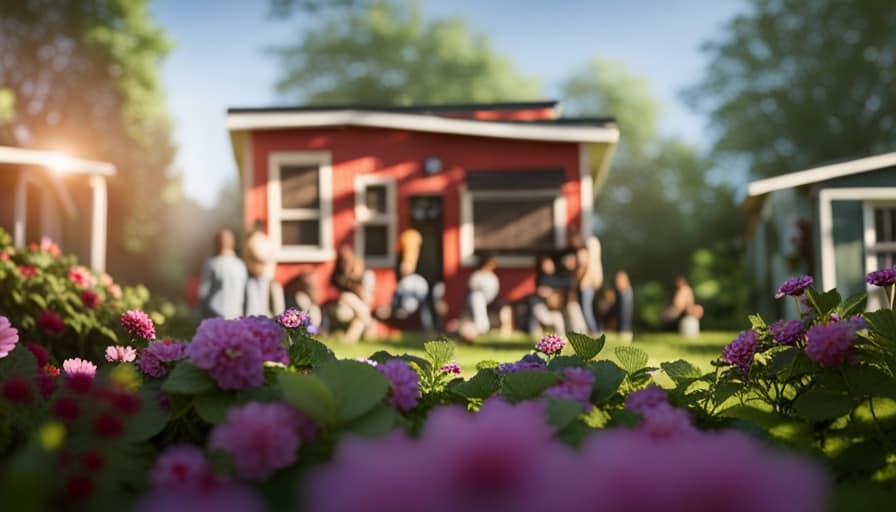
Can I Build a Tiny House on Wheels or Does It Have to Be on a Foundation?
Building a tiny house on wheels offers flexibility and mobility, while a foundation provides stability and permanence. Consider pros and cons of each option. To make a tiny house on wheels more stable and secure, use proper anchoring and reinforcement techniques.
Are There Any Restrictions on the Size or Height of a Tiny House?
There are some restrictions on the size and height of a tiny house. These limitations vary depending on local building codes and zoning regulations. It’s crucial to research and comply with these guidelines when planning your tiny house project.
How Long Does It Usually Take to Build a Tiny House From Start to Finish?
Building a tiny house typically takes several months, depending on factors such as complexity and available resources. Throughout the process, we face challenges like sourcing materials and coordinating different tradespeople, but seeing the final result is incredibly rewarding.
Conclusion
In conclusion, building a tiny house involves several crucial steps. These steps include choosing a plan and sourcing materials, preparing the foundation, building the frame, and installing utilities. Additionally, interior and exterior finishing touches are important to consider. Throughout the construction process, common questions and issues may arise. However, with careful planning and attention to detail, the end result can be a beautiful and functional tiny home.

For example, imagine a couple who built their dream tiny house on wheels. This allows them the freedom to travel and explore new places while still having a comfortable and cozy home to return to.
I’m Theodore, and I love tiny houses. In fact, I’m the author of Tiny House 43, a book about tiny houses that are also tree houses. I think they’re magical places where imaginations can run wild and adventures are just waiting to happen.
While tree houses are often associated with childhood, they can be the perfect adult retreat. They offer a cozy space to relax and unwind, surrounded by nature. And since they’re typically built on stilts or raised platforms, they offer stunning views that traditional homes simply can’t match.
If you’re looking for a unique and romantic getaway, a tree house tiny house might just be the perfect option.
Tiny Houses
How Can You Get Running Water for a Mobile Tiny House

Affordable plumbing solutions for mobile tiny homes
I’ve always dreamed of having a mobile tiny house, but one question always lingered in my mind: how can I get running water?
Well, I’ve done some research and I’m excited to share with you all the solutions I’ve found. From water storage options to filtration methods and plumbing choices, there are plenty of ways to ensure you have a steady supply of water on the go.
So, let’s dive in and discover how you can make your tiny house feel like a home, complete with running water.
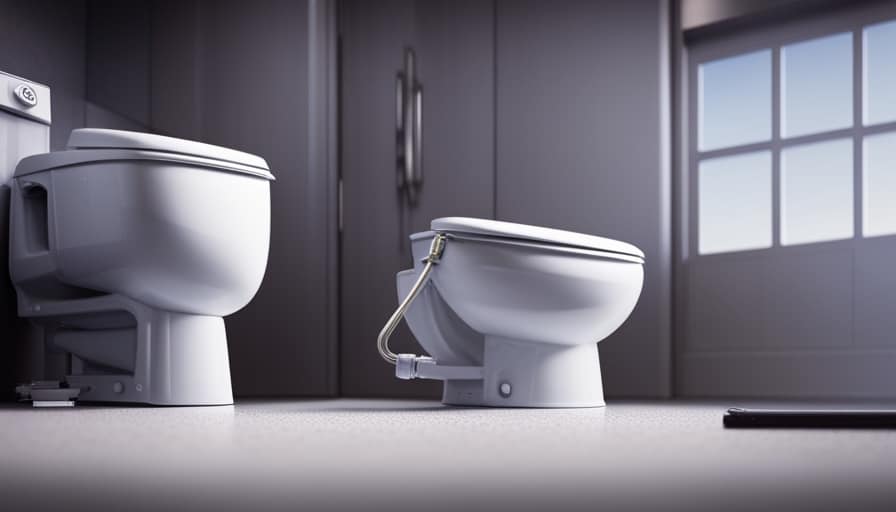
Key Takeaways
- Install a water storage tank under the house or in a dedicated storage compartment
- Explore rainwater harvesting systems with large barrels or cisterns
- Consider water delivery services for a constant supply
- Use portable water tanks for easily transportable access to running water on the go
Water Storage Solutions
I can easily store water for my mobile tiny house using various water storage solutions.
One option is to install a water storage tank, which can be placed under the house or in a dedicated storage compartment. These tanks are available in different sizes, allowing me to choose the one that best fits my needs.
Another solution is to use portable water containers, such as jerry cans or water bladders, which can be easily transported and refilled as needed.
Additionally, I can explore the option of utilizing rainwater harvesting systems, which collect rainwater from the roof and store it in large barrels or cisterns. This not only provides a sustainable water source but also helps in water conservation efforts.
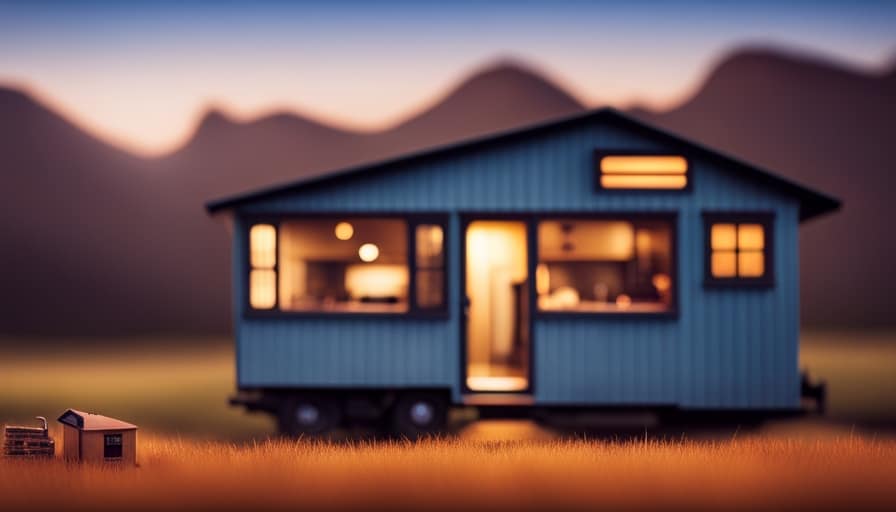
In some areas, water delivery services are available, where water can be delivered directly to my mobile tiny house, ensuring a constant supply.
Rainwater Harvesting Systems
I can utilize rainwater harvesting systems by collecting rainwater from the roof of my mobile tiny house and storing it in large barrels or cisterns. Here are three reasons why rainwater harvesting systems are a great option for serving others in a mobile tiny house:
-
Sustainable Water Source:
Rainwater harvesting systems provide a sustainable and renewable source of water for everyday use. By collecting rainwater, you can reduce your reliance on traditional water sources, such as municipal water supplies or wells. This not only helps conserve water but also promotes environmental sustainability. -
Cost-effective Solution:
Installing a rainwater harvesting system can be a cost-effective solution for obtaining running water in a mobile tiny house. Once the system is set up, the rainwater collected can be used for various purposes, such as cooking, cleaning, and bathing. This can significantly reduce your water bill and overall expenses.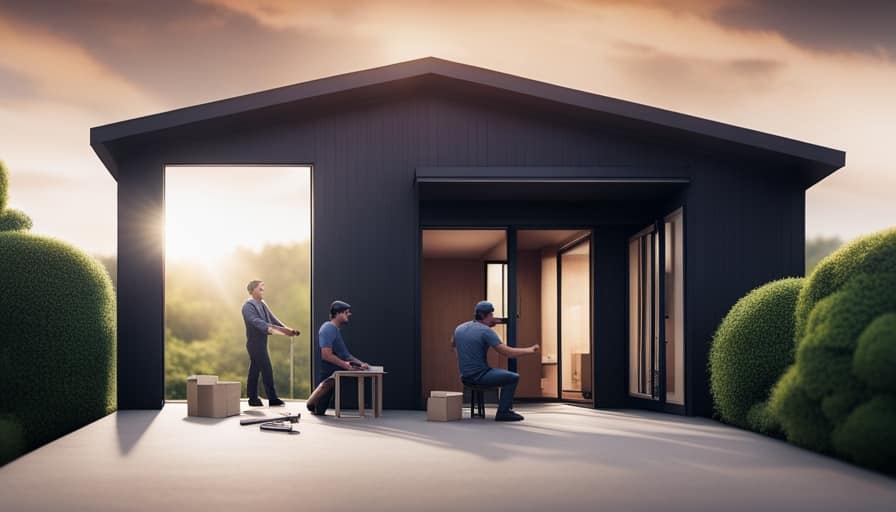
-
Greywater Recycling:
Rainwater harvesting systems can also be integrated with greywater recycling systems. Greywater refers to wastewater generated from activities like showering, washing dishes, and doing laundry. By incorporating greywater recycling, you can treat and reuse this water for non-potable purposes, such as irrigation or flushing toilets. This helps further conserve water and minimize your environmental impact.
Portable Water Tanks
One option for obtaining running water in a mobile tiny house is to use portable water tanks. These tanks can be easily transported and connected to plumbing systems. Portable water tanks are a convenient solution for those who want to have access to running water wherever they go.
These tanks come in various sizes and can be filled with water from water delivery services or through other means such as collecting rainwater. Once filled, the tanks can be connected to the plumbing system of the tiny house, allowing for a gravity-fed system.
Gravity-fed systems rely on the force of gravity to deliver water to the faucets and fixtures. This setup eliminates the need for electric pumps and ensures a continuous supply of water for daily activities in the mobile tiny house.
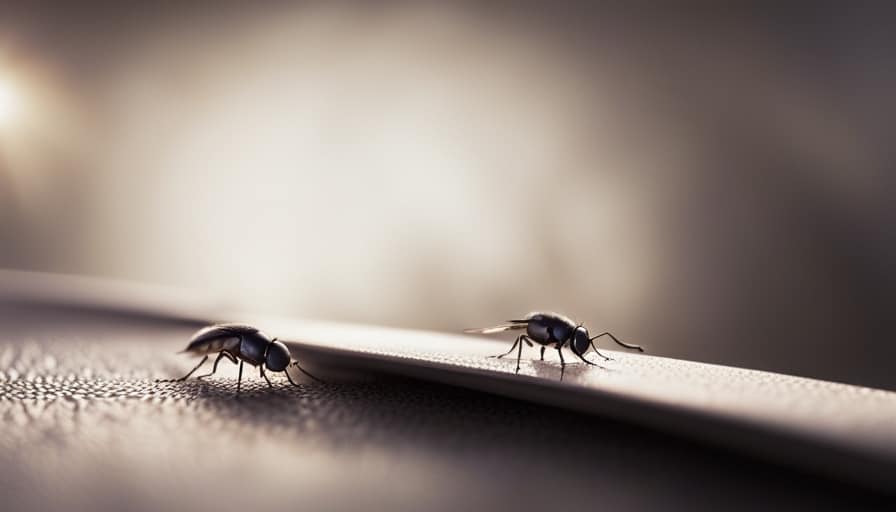
Filtration and Purification Methods
A common option for filtration and purification methods in a mobile tiny house is to use a portable water filter. This compact and efficient device is designed to remove impurities and contaminants from water, ensuring that it’s safe and drinkable.
Here are three water filtration techniques that can be used in a mobile tiny house:
-
Activated carbon filters: These filters use activated carbon to trap and remove impurities such as chlorine, sediment, and volatile organic compounds. They’re effective in improving the taste and odor of water.
-
Reverse osmosis systems: Reverse osmosis is a water purification process that uses a semipermeable membrane to remove ions, molecules, and larger particles from water. It’s highly effective in removing contaminants, including heavy metals and dissolved solids.
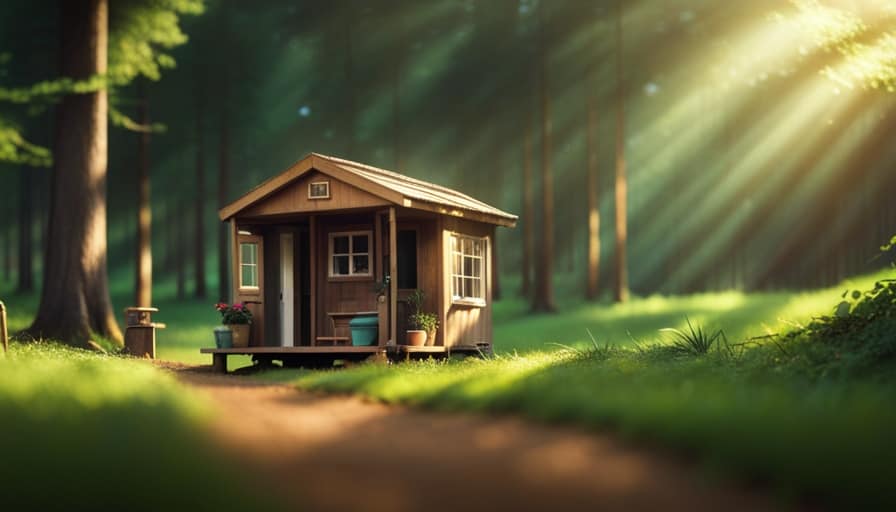
-
UV sterilization: UV sterilization is a method that uses ultraviolet light to kill bacteria, viruses, and other microorganisms in water. It’s a chemical-free and environmentally friendly way to purify water.
By using these water purification equipment, you can ensure that your mobile tiny house has access to clean and safe drinking water.
In the next section, we’ll explore plumbing options for tiny house living.
Plumbing Options for Tiny House Living
There are several plumbing options available for tiny house living that can provide convenient access to running water.
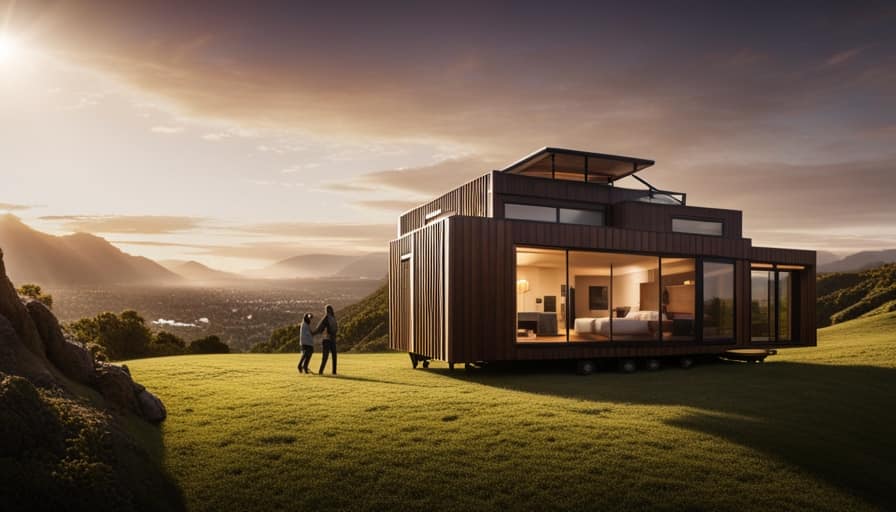
When it comes to water source alternatives, one option is to connect your tiny house to a municipal water supply if it’s available in your area. This involves installing a water meter and connecting to the main water line.
Another option is to use a well or a spring as your water source. This requires drilling a well or locating a nearby spring and installing a pump system to bring water into your tiny house.
As for plumbing layout designs, you can choose between a traditional plumbing system or a more compact and space-efficient PEX plumbing system. The choice depends on your specific needs and the layout of your tiny house.
Frequently Asked Questions
What Are Some Common Challenges or Limitations of Using Water Storage Solutions in a Mobile Tiny House?
Some common challenges or limitations of using water storage solutions in a mobile tiny house include the limited capacity of tanks, the need for frequent refilling, and the reliance on rainwater collection and water conservation techniques to ensure a sustainable water supply.
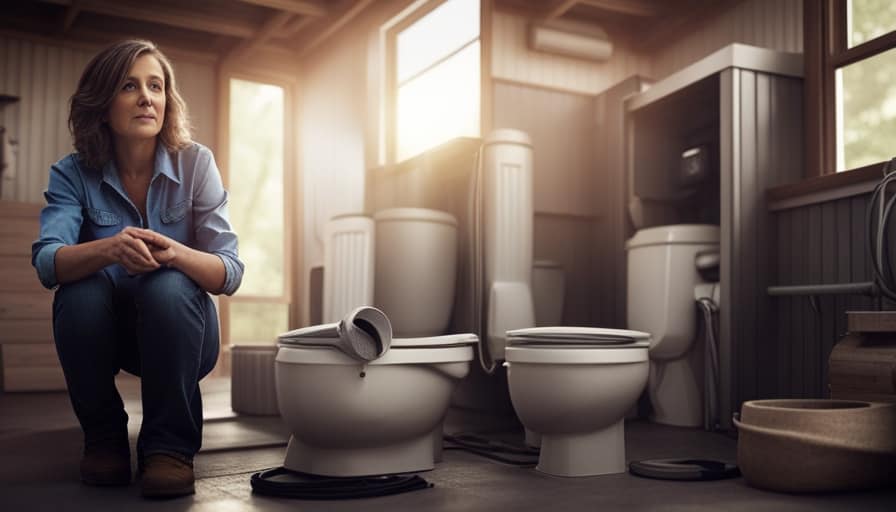
Can Rainwater Harvesting Systems Be Used in All Climates, or Are They Only Suitable for Specific Regions?
Rainwater harvesting benefits include sustainability and self-sufficiency. Techniques like roof catchment and storage tanks can be used in various climates. However, factors like rainfall patterns and water quality should be considered for optimal usage.
Are Portable Water Tanks a Practical Option for Long-Term Use in a Mobile Tiny House, or Are They More Suitable for Temporary Setups?
Portable water tanks can be a practical option for long-term use in a mobile tiny house, but they have pros and cons. Connecting to a municipal water source offers convenience but may limit mobility. Consider water storage alternatives.
What Are the Key Differences Between Water Filtration and Purification Methods, and Which One Is More Effective for Ensuring Safe Drinking Water in a Mobile Tiny House?
When it comes to ensuring safe drinking water in my mobile tiny house, I want to know the key differences between water filtration and purification methods. Which one is more effective?
Are There Any Specific Considerations or Modifications Required for Plumbing Options in a Mobile Tiny House, Compared to a Traditional Home?
When it comes to plumbing options in a mobile tiny house, there are specific considerations and modifications required. Choosing the right plumbing materials and implementing water conservation tips are crucial for a functional and sustainable water system.
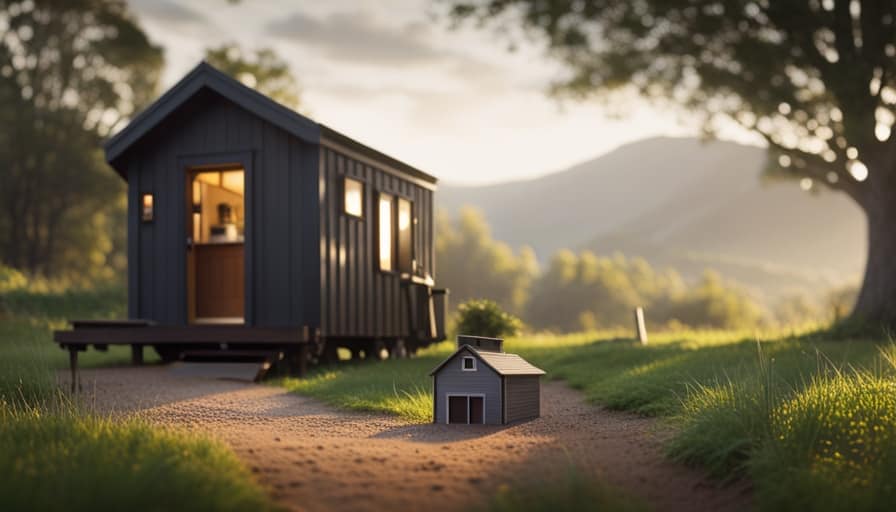
Conclusion
In conclusion, obtaining running water for a mobile tiny house requires careful consideration and planning.
Water storage solutions, such as portable water tanks or rainwater harvesting systems, can provide a sustainable source.
Implementing filtration and purification methods ensures clean and safe water for everyday use.
Lastly, choosing the appropriate plumbing options will enable efficient water flow within the tiny house.
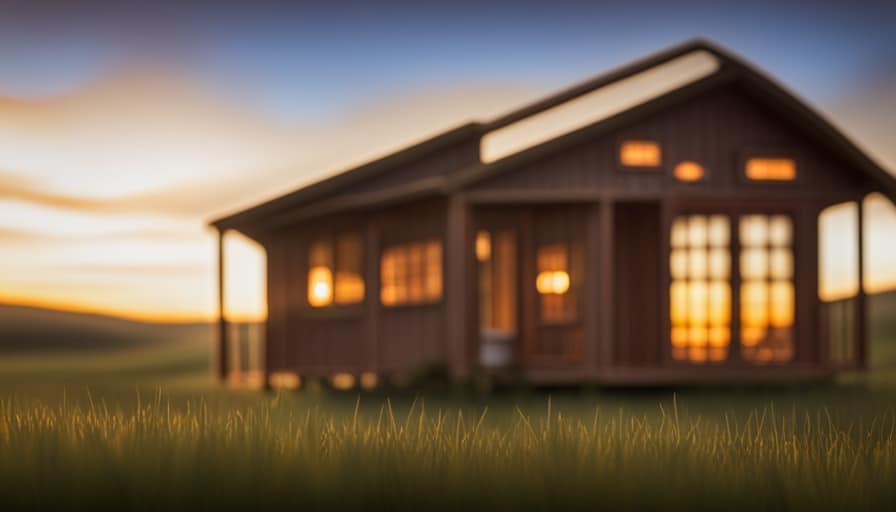
Remember, as the saying goes, ‘A little preparation goes a long way’ when it comes to establishing a functional water system for your mobile tiny house.
I’m Theodore, and I love tiny houses. In fact, I’m the author of Tiny House 43, a book about tiny houses that are also tree houses. I think they’re magical places where imaginations can run wild and adventures are just waiting to happen.
While tree houses are often associated with childhood, they can be the perfect adult retreat. They offer a cozy space to relax and unwind, surrounded by nature. And since they’re typically built on stilts or raised platforms, they offer stunning views that traditional homes simply can’t match.
If you’re looking for a unique and romantic getaway, a tree house tiny house might just be the perfect option.
Tiny Houses
Unleashing the Giant Potential in Tiny House Rentals
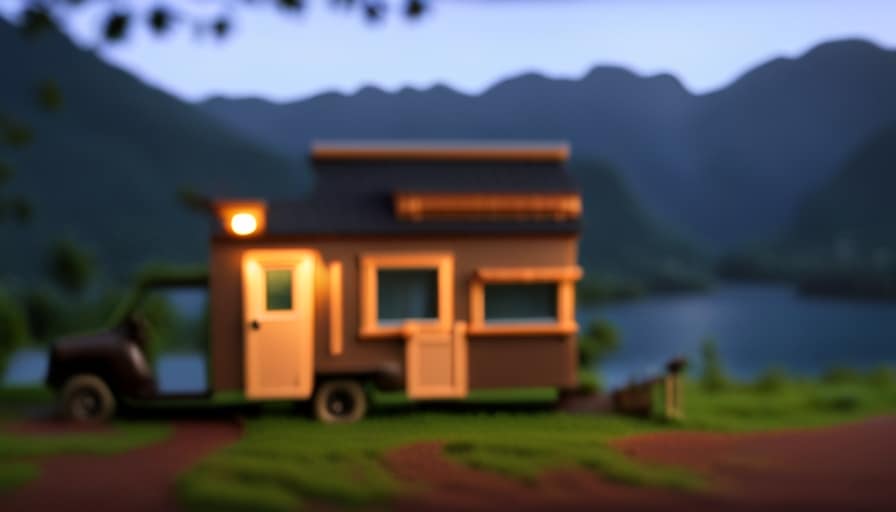
Are you prepared to unlock the amazing potential of tiny house rentals? Prepare yourself for an exciting adventure where the opportunities are limitless and the rewards are substantial.
In this article, we’ll explore the surge in tiny house rentals, navigate the legal terrain, and uncover effective marketing strategies.
We’ll also share insights on enhancing customer experience, unpacking pricing strategies, and maximizing profit potential.
So, join us as we delve into the exciting world of tiny house rentals and discover how you can stand out in this booming market.
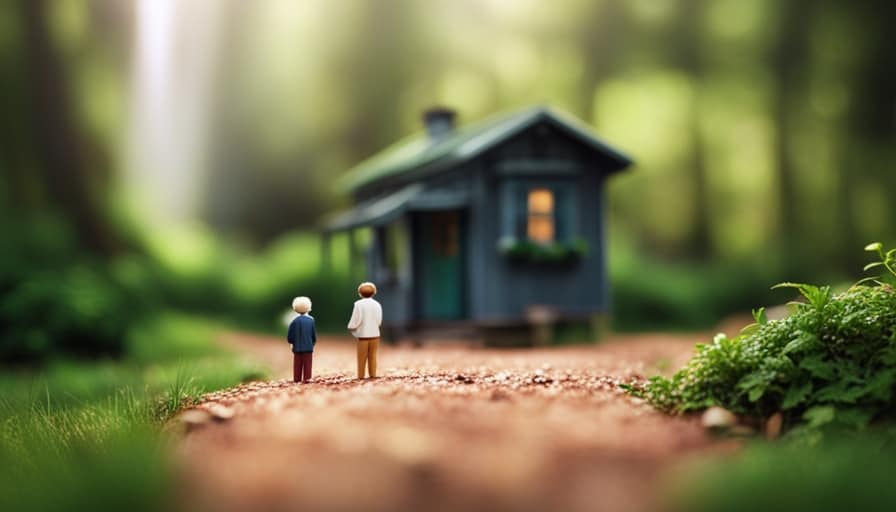
Key Takeaways
- The surge in tiny house rentals is driven by the popularity of this unique accommodation option and the growing interest in sustainable and minimalist lifestyles.
- Offering tiny house rentals requires careful consideration of legal factors such as zoning regulations, building codes, permits, and insurance requirements.
- There are various business opportunities in the tiny house rental market, including targeting niche markets, maximizing rental profitability through efficient management, and differentiating from competition through creative branding and collaborative partnerships.
- Effective marketing strategies for tiny house rentals involve leveraging social media, partnering with influencers, participating in local events, implementing referral programs, and creating captivating content to increase brand awareness and generate interest.
Exploring the Surge in Tiny House Rentals
We have noticed a significant increase in the popularity of tiny house rentals. This surge can be attributed to a variety of factors, including the growing interest in sustainable living practices and the desire for a more minimalist lifestyle. People are increasingly drawn to the idea of downsizing and reducing their carbon footprint, and renting a tiny house allows them to experience this firsthand.
However, before diving into the world of tiny house rentals, there are important legal considerations that need to be taken into account. These include zoning regulations, building codes, and permits. Navigating the legal terrain for tiny house rentals can be complex, but with the right guidance and knowledge, it’s possible to overcome these challenges and successfully offer these unique accommodations to others seeking a sustainable and minimalist experience.
Navigating the Legal Terrain for Tiny House Rentals
Before embarking on the journey of offering tiny house rentals, it is crucial for us to carefully navigate through the legal terrain, considering zoning regulations, building codes, and permits. Navigating legal challenges is essential to ensure compliance and mitigate any potential risks or liabilities. Key aspects to consider include insurance requirements, tiny house rental agreements, permits, inspections, and taxation. It is also important to adhere to safety standards, code compliance, and property management practices. Occupancy limits, neighbor concerns, noise regulations, waste management, parking regulations, utility connections, and health and sanitation standards are additional areas to address. By addressing these legal requirements, we can ensure a smooth and successful operation of our tiny house rental business, providing a safe and enjoyable experience for our customers.
| Legal Aspect | Considerations |
|---|---|
| Zoning restrictions | Check local regulations for allowable locations |
| Building codes | Ensure compliance with construction and safety standards |
| Permits | Obtain necessary permits for construction and operation |
| Insurance requirements | Secure appropriate coverage for liability and property damage |
Unlocking Business Opportunities in Tiny House Rentals
When it comes to unlocking business opportunities in the booming market of tiny house rentals, unique marketing strategies play a crucial role.
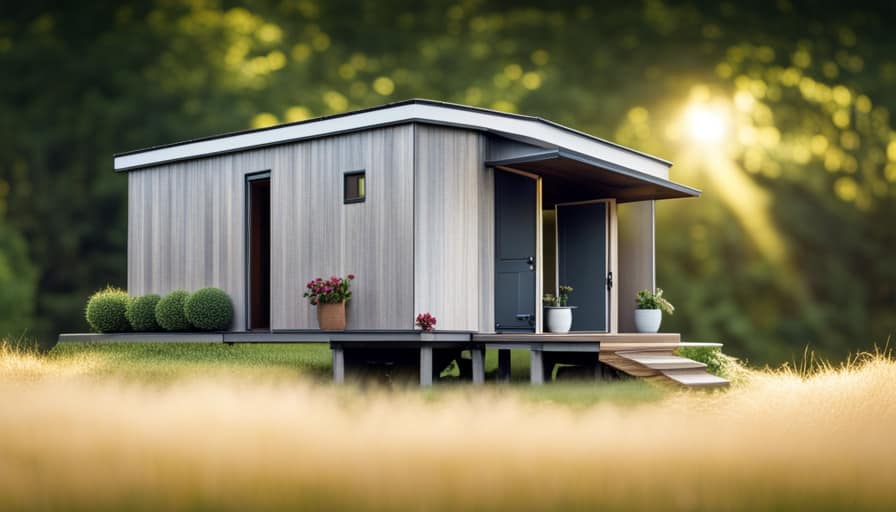
By thinking outside the box and targeting niche markets, such as eco-conscious travelers or digital nomads, owners can attract a steady stream of renters.
Additionally, maximizing rental profitability through efficient management systems and offering added value amenities can further capitalize on the growing demand for unique and sustainable accommodations.
Unique Marketing Strategies
Our innovative marketing strategies for tiny house rentals will help us unlock new business opportunities in this booming market. With creative branding and collaborative partnerships, we’re able to differentiate ourselves from the competition and attract a larger customer base.
Here are four key strategies we’re implementing:
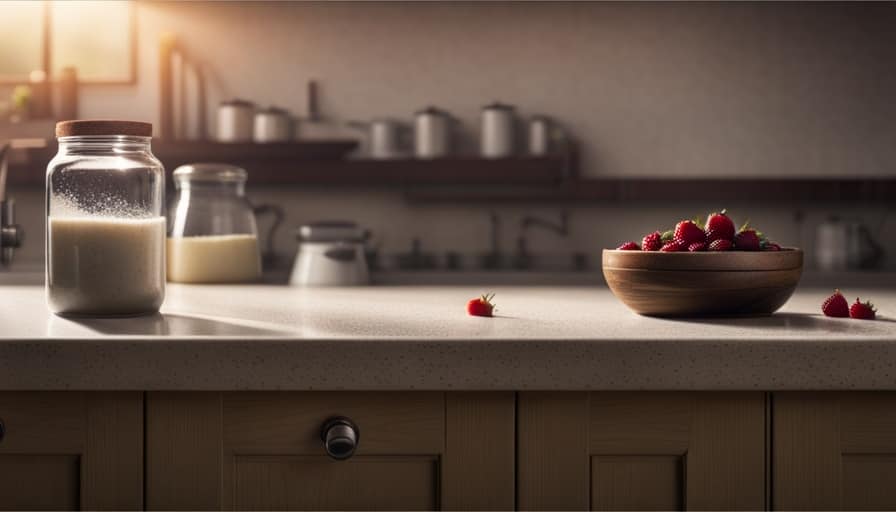
-
Social media campaigns: We leverage platforms like Instagram and Facebook to showcase the unique features and experiences our tiny houses offer. By engaging with our audience and sharing captivating content, we increase brand awareness and generate interest in our rentals.
-
Influencer collaborations: Partnering with popular influencers in the travel and lifestyle space allows us to tap into their loyal followers and reach a wider audience. These collaborations help us build credibility and trust among potential customers.
-
Local events and workshops: By hosting workshops and participating in local events, we establish ourselves as experts in tiny house living. This not only attracts potential renters but also fosters a sense of community and connection.
-
Referral programs: We incentivize our customers to refer their friends and family to our tiny house rentals by offering discounts or rewards. This word-of-mouth marketing strategy helps us acquire new customers while also strengthening relationships with existing ones.
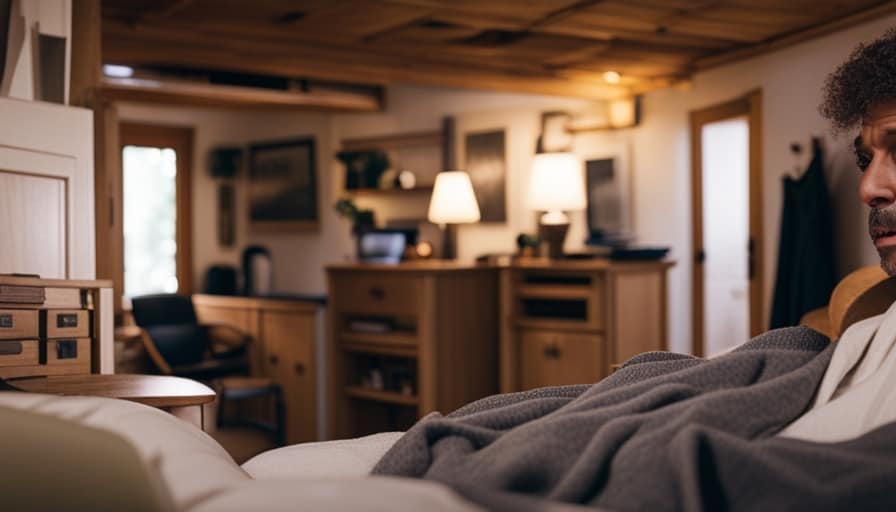
Maximizing Rental Profitability
To maximize rental profitability and unlock potential business opportunities in tiny house rentals, we need to strategically optimize our pricing and amenities. Setting the right rental pricing is crucial in attracting customers and generating revenue. Conduct market research to understand the average rental rates in your area and adjust your prices accordingly. Additionally, consider offering different pricing options such as weekend rates or discounted rates for longer stays to appeal to a wider range of customers. Along with competitive pricing, prioritizing customer satisfaction is essential. Provide exceptional amenities such as fully equipped kitchens, comfortable bedding, and outdoor spaces to enhance the overall experience for your guests. By ensuring a positive stay, you can increase customer satisfaction, generate positive reviews, and encourage repeat bookings. Now, let’s explore effective marketing strategies for tiny house rentals.
| Rental Pricing | Customer Satisfaction |
|---|---|
| Research market rates | Provide exceptional amenities |
| Offer different pricing options | Prioritize guest comfort and convenience |
| Regularly review and adjust prices | Encourage feedback and address concerns |
To maximize rental profitability and unlock potential business opportunities in tiny house rentals, we need to strategically optimize our pricing and amenities. Setting the right rental pricing is crucial in attracting customers and generating revenue. Conduct market research to understand the average rental rates in your area and adjust your prices accordingly. Additionally, consider offering different pricing options such as weekend rates or discounted rates for longer stays to appeal to a wider range of customers. Along with competitive pricing, prioritizing customer satisfaction is essential. Provide exceptional amenities such as fully equipped kitchens, comfortable bedding, and outdoor spaces to enhance the overall experience for your guests. By ensuring a positive stay, you can increase customer satisfaction, generate positive reviews, and encourage repeat bookings. Now, let’s explore effective marketing strategies for tiny house rentals.
Effective Marketing Strategies for Tiny House Rentals
When it comes to marketing tiny house rentals, targeting niche markets is essential.
By identifying specific groups of people who’d be interested in staying in a tiny house, such as eco-conscious travelers or minimalist adventurers, we can tailor our marketing efforts to reach them directly.
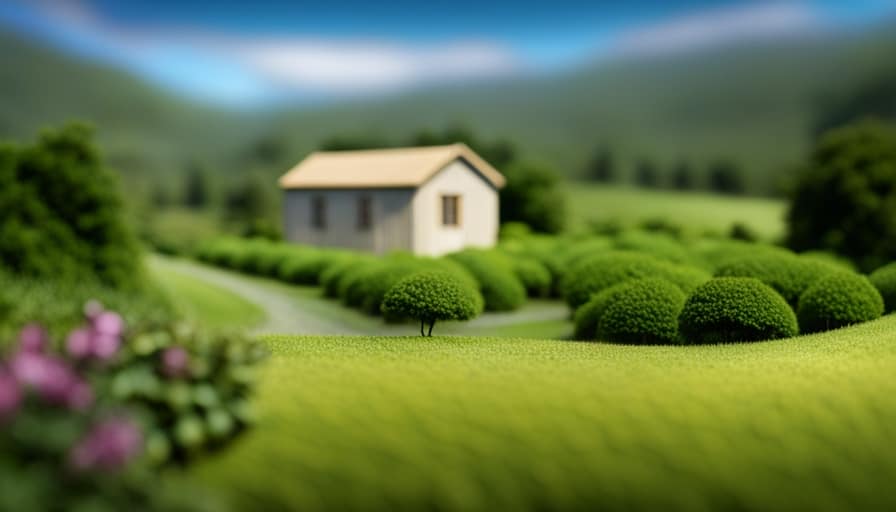
Utilizing social media platforms like Instagram and Facebook allows us to showcase the unique features of our tiny houses and engage with potential guests in a visually appealing way.
Targeting Niche Markets
How can we effectively target niche markets for our tiny house rentals? Targeting specific demographics and interests is key to maximizing the potential of our sustainable housing offerings. Here are four strategies to consider:
-
Targeting Millennials: Millennials are a prime market for tiny house rentals due to their preference for sustainable living and minimalistic lifestyles. Tailoring our marketing efforts to this demographic can include highlighting the eco-friendly features of our tiny homes and emphasizing the affordability and flexibility they offer.
-
Social Media Advertising: Utilize social media platforms such as Instagram and Pinterest to showcase our unique tiny house rentals. Engaging content, stunning visuals, and testimonials from satisfied customers can help attract niche markets interested in sustainable housing options.

-
Collaborations and Partnerships: Partnering with local sustainable businesses, eco-conscious organizations, or influential bloggers can help expand our reach and tap into niche markets. Collaborative promotions and cross-promotion can create a win-win situation for both parties involved.
-
Targeted Online Communities: Identify and engage with online communities and forums where individuals interested in sustainable living and tiny house rentals gather. By providing valuable insights, answering questions, and sharing success stories, we can establish ourselves as a trusted resource and attract potential customers.
Utilizing Social Media
With the rise of social media platforms, we can effectively market our tiny house rentals to niche markets. Utilizing social media strategies is crucial for increasing online visibility and reaching potential customers. Platforms like Facebook, Instagram, and Twitter offer unique opportunities to showcase our tiny houses and connect with our target audience.
To maximize our social media presence, we need to develop a comprehensive strategy. This includes creating engaging content that highlights the unique features and benefits of our tiny house rentals. We can share stunning photos, videos, and testimonials from satisfied customers to attract attention and build trust.
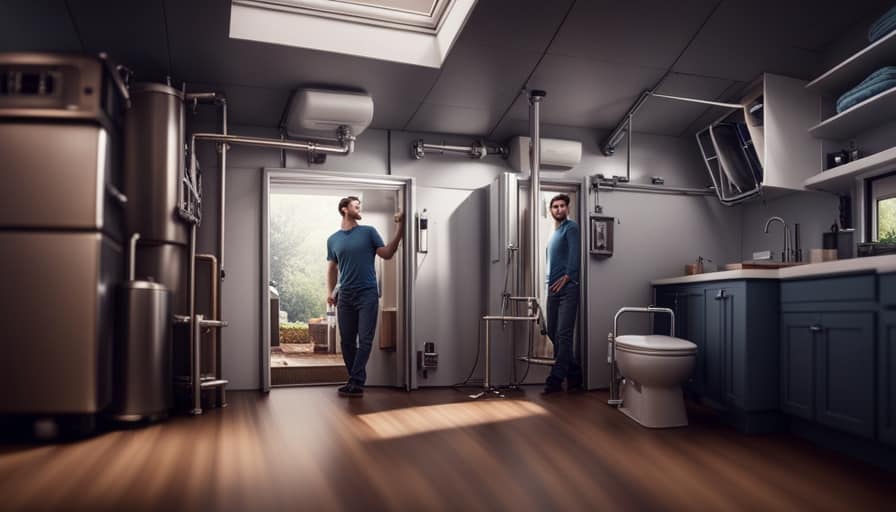
In addition to creating compelling content, we should also leverage social media advertising tools to reach a wider audience. By targeting specific demographics and interests, we can ensure that our ads are seen by people who are most likely to be interested in renting a tiny house.
Showcasing Unique Features
Why should we highlight the unique features of our tiny house rentals and how can it be an effective marketing strategy?
Renovating interiors and incorporating innovative design concepts in our tiny house rentals allows us to create spaces that stand out from the rest. By showcasing these unique features, we can attract potential renters and differentiate ourselves in a competitive market.
Here are four reasons why highlighting these features can be an effective marketing strategy:

-
Differentiation: Highlighting unique features sets us apart from other rentals and helps us stand out in the market.
-
Attractiveness: Renovated interiors and innovative design concepts make our rentals visually appealing, attracting renters who appreciate aesthetics.
-
Functionality: Showcasing unique features emphasizes the practicality and functionality of our tiny house rentals, appealing to those looking for efficiency and convenience.
-
Value: By highlighting the unique features, we communicate the value that renters can expect to receive from our rentals.
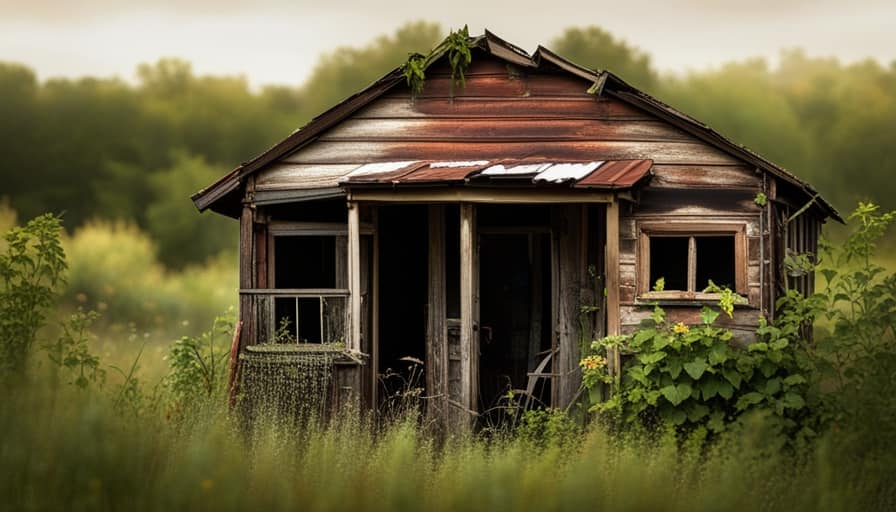
Enhancing Customer Experience in Tiny House Rentals
We believe that prioritizing comfort and relaxation is essential in maximizing customer satisfaction in tiny house rentals. To enhance the customer experience, it’s crucial to focus on sustainability practices and promote community engagement.
By incorporating eco-friendly features such as solar panels, rainwater harvesting systems, and energy-efficient appliances, we can ensure that our tiny houses have a minimal environmental impact. This not only appeals to environmentally-conscious customers but also contributes to a sense of responsibility and stewardship for the community.
Furthermore, we can facilitate community engagement by organizing events and activities that encourage interaction and connection among guests. This can include communal gardens, shared spaces, and collaborative projects.
The Role of Maintenance in Tiny House Rentals
Our team understands the importance of regular upkeep and efficient repairs in ensuring the longevity and functionality of our tiny house rentals. We strive to provide our customers with a seamless and hassle-free experience by prioritizing maintenance.
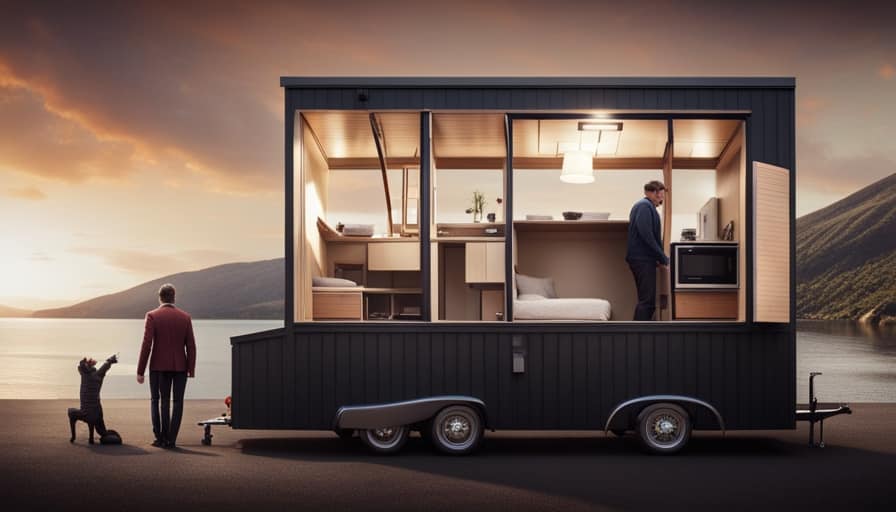
Here are four reasons why regular maintenance is crucial for tiny house rentals:
-
Preserving the integrity of the property: Regular maintenance helps prevent major issues such as leaks, electrical problems, or structural damage, ensuring the safety and comfort of our guests.
-
Cost-effective maintenance solutions: By addressing minor repairs promptly, we can avoid more expensive and time-consuming fixes in the future, saving both time and money.
-
Enhancing guest satisfaction: Well-maintained tiny houses create a positive experience for our guests, increasing their satisfaction and likelihood of returning or recommending our rentals to others.
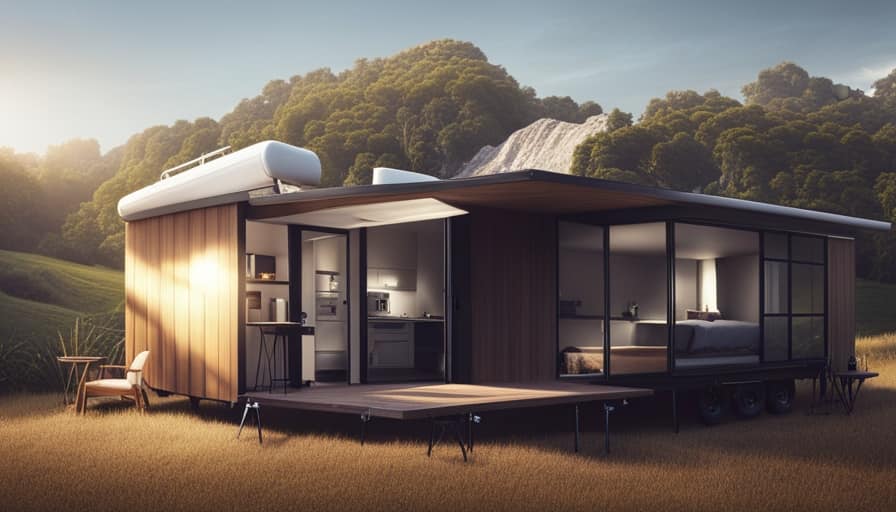
-
Sustainable and eco-friendly practices: Regular maintenance allows us to implement environmentally-friendly solutions, such as energy-efficient upgrades or water-saving measures, reducing our carbon footprint.
At our company, we prioritize regular maintenance to provide our guests with the best possible experience while also ensuring the long-term sustainability of our tiny house rentals.
Unpacking Pricing Strategies for Thriving Tiny House Rentals
When it comes to thriving in the tiny house rental market, one of the key factors to consider is the pricing strategy. Competitive pricing strategies are crucial in attracting potential renters and maximizing rental profitability.
Competitive Pricing Strategies
Finding the right pricing strategy is crucial for the success and profitability of our thriving tiny house rentals. To ensure that our pricing remains competitive in the market, we must consider several factors and implement effective strategies.
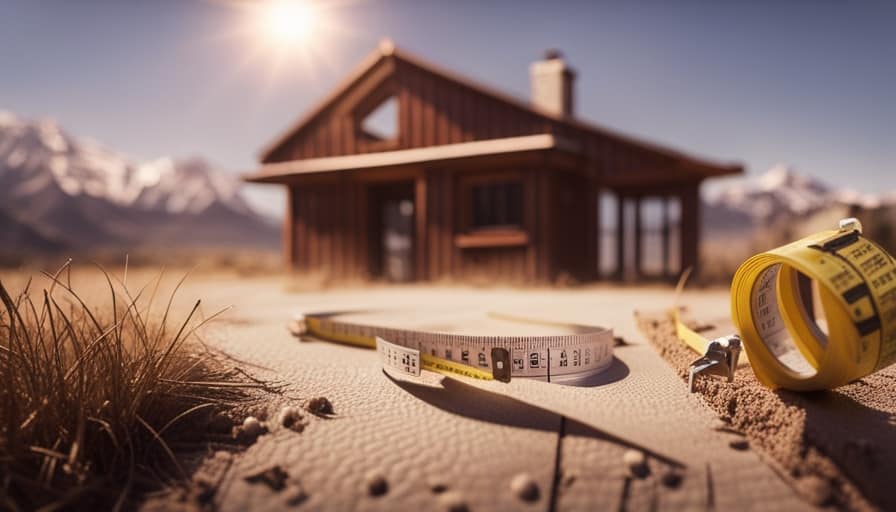
Here are four key approaches to consider when setting our prices:
-
Explore occupancy rates: By analyzing the demand for our tiny house rentals throughout the year, we can identify periods of high and low occupancy. Adjusting our prices accordingly during peak seasons can help maximize revenue.
-
Analyze seasonal demand: Understanding the seasonal fluctuations in demand is essential for setting competitive prices. By offering discounts or promotions during slower periods, we can attract more guests and maintain a steady flow of bookings.
-
Monitor competitor pricing: Keeping an eye on our competitors’ pricing strategies can provide valuable insights. We can adjust our rates to match or slightly undercut our competition, ensuring that our prices remain attractive to potential guests.
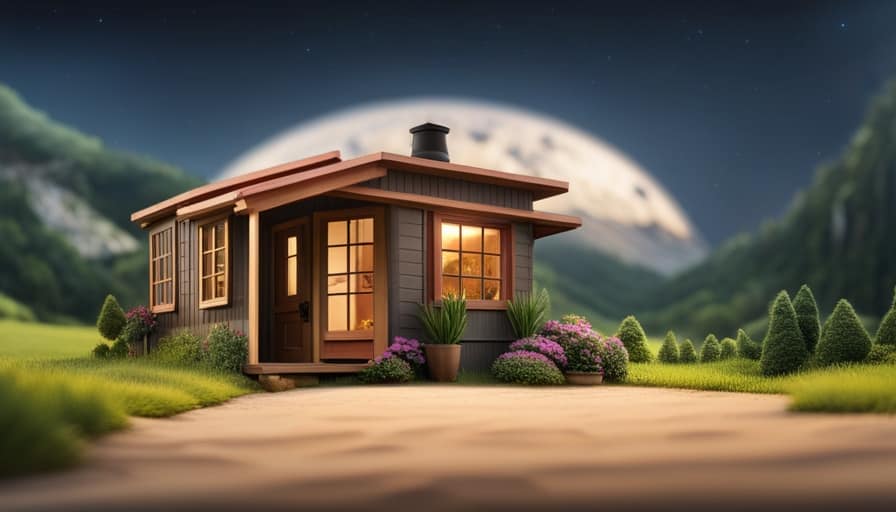
-
Consider value-added services: Offering additional amenities or services, such as complimentary breakfast or access to recreational facilities, can justify higher prices and differentiate us from other rental options.
Maximizing Rental Profitability
To ensure that we maximize rental profitability in our thriving tiny house rentals, it’s important to carefully unpack and implement effective pricing strategies.
One key aspect of maximizing rental profitability is attracting long term tenants. By offering competitive pricing and incentives for longer stays, we can encourage tenants to commit to extended periods of occupancy. This not only reduces turnover costs but also provides a stable source of income.
Another important factor to consider is optimizing space utilization. By making the most of every square inch in our tiny houses, we can potentially increase the number of tenants we can accommodate and generate higher rental income. This can be achieved through smart furniture choices, flexible storage solutions, and efficient room layouts.
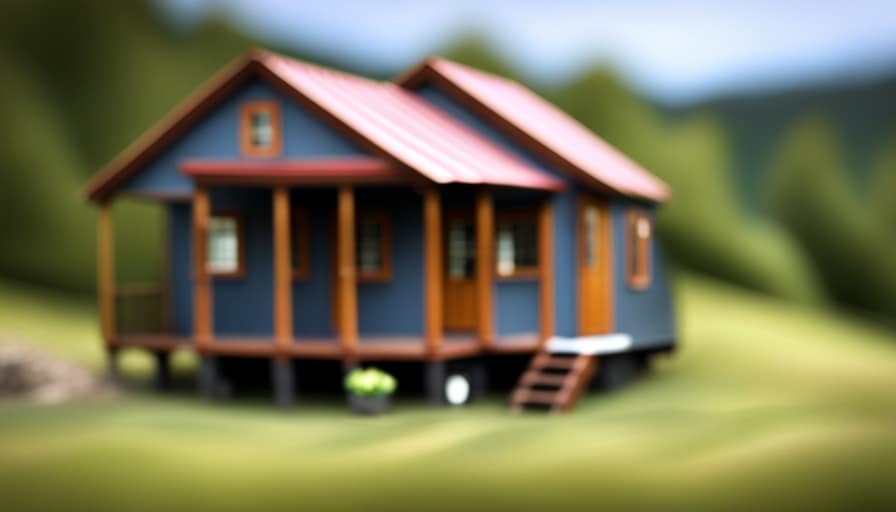
Maximizing Profit Potential in Tiny House Rentals
In order to maximize our profit potential in tiny house rentals, we need to carefully consider our pricing strategies. Here are four key factors to keep in mind:
-
Market Research: Conduct thorough market research to understand the demand for tiny house rentals in your area. This will help you determine the optimal price range that will attract customers while ensuring profitability.
-
Exploring Sustainability Practices: Emphasize the sustainable features of your tiny house rentals to appeal to eco-conscious customers. Highlight energy-efficient appliances, solar panels, and water-saving fixtures to differentiate yourself from competitors.
-
Optimizing Space Utilization: Make the most of the limited space in tiny houses by utilizing smart storage solutions and multifunctional furniture. This won’t only enhance the overall guest experience but also allow you to charge higher rates for well-designed and organized spaces.

-
Value-Added Services: Consider offering additional services such as bike rentals, local tour guides, or curated experiences to add value for your guests. These extras can justify higher prices and increase your profit potential.
Standing Out in the Tiny House Rental Market
To differentiate ourselves from the competition and attract customers in the crowded tiny house rental market, we must focus on delivering unique and unforgettable experiences.
One way to stand out is by exploring interior design. By incorporating innovative and stylish designs into our tiny houses, we can create spaces that aren’t only functional but also visually appealing. This will make our rentals more desirable and memorable for our guests.
Additionally, customer reviews and testimonials play a crucial role in standing out. Positive reviews and testimonials can build trust and credibility among potential customers. By providing exceptional service and ensuring that our guests have a remarkable stay, we can encourage them to leave positive reviews and share their experiences, further enhancing our reputation and setting us apart from the competition.
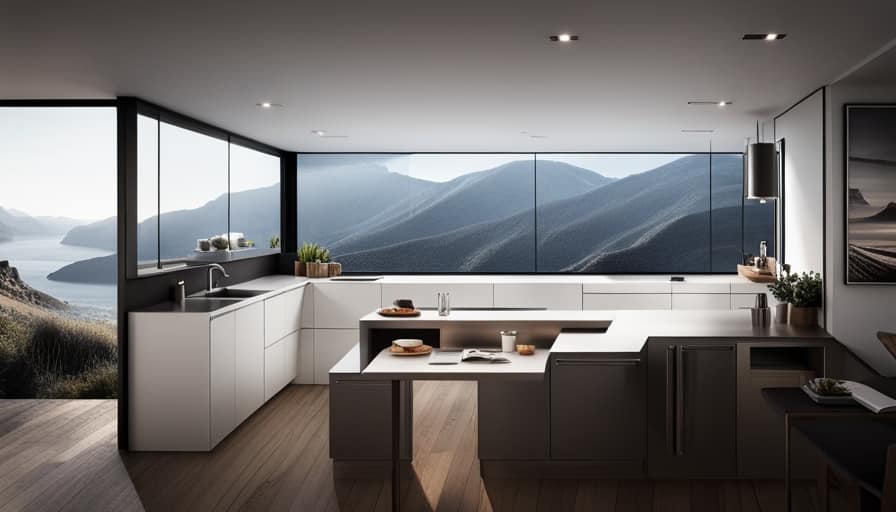
Scaling Up Your Tiny House Rental Business
By expanding into new markets and partnering with local property owners, we can effectively scale up our tiny house rental business and maximize its potential. Scaling up a business comes with its challenges, but with the right strategies in place, we can overcome them and continue to grow.
Here are four key steps to successfully scale up our tiny house rental business:
- Market research and analysis:
- Identify new markets with a high demand for tiny house rentals.
- Understand the preferences and needs of potential customers in those markets.
- Streamline operations:
- Implement efficient systems and processes to handle increased demand.
- Ensure smooth operations at multiple locations.
- Build strong partnerships:
- Collaborate with local property owners to expand our inventory.
- Offer a diverse range of tiny house rental options to customers.
- Focus on customer retention:
- Provide exceptional customer service.
- Personalize experiences and offer loyalty programs.
- Keep customers coming back and generate positive word-of-mouth.
Frequently Asked Questions
How Can I Find Reliable Tenants for My Tiny House Rental?
Finding trustworthy renters is crucial for our tiny house rental. We can use effective marketing strategies to attract potential tenants, such as online listings and social media promotion. This ensures a reliable and steady stream of tenants for our property.
What Are Some Unique Design Features That Can Attract More Customers to My Tiny House Rental?
When it comes to attracting more customers to our tiny house rentals, unique design features and creative marketing strategies are key. By incorporating eye-catching elements and innovative promotions, we can unleash the giant potential in our rentals.
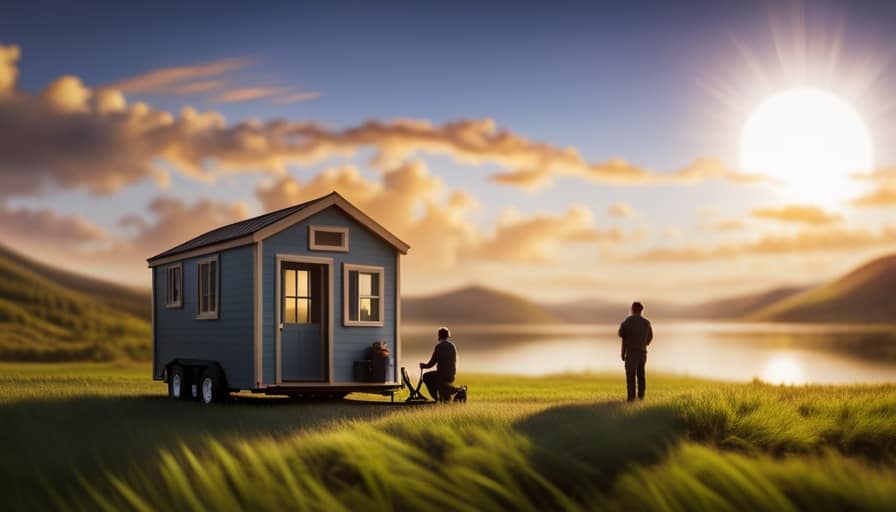
Are There Any Specific Regulations or Permits Required for Operating a Tiny House Rental Business?
Regulatory compliance, permits, licensing, zoning requirements, and legal considerations are all important factors to consider when operating a tiny house rental business. Understanding these aspects ensures smooth business operations and avoids potential legal issues.
How Can I Effectively Advertise My Tiny House Rental to Reach a Wider Audience?
To effectively advertise our tiny house rental and reach a wider audience, we utilize various marketing strategies such as social media campaigns, targeted online advertising, and partnerships with local travel bloggers. These efforts ensure we connect with our target audience and maximize our reach.
What Are Some Strategies for Maximizing the Profitability of My Tiny House Rental Business?
To maximize profitability in our tiny house rental business, we focus on scaling strategies like increasing customer satisfaction. By offering unique amenities, impeccable service, and efficient operations, we attract more guests and ensure repeat business.
Conclusion
In conclusion, the surge in tiny house rentals presents a lucrative business opportunity for entrepreneurs. By navigating the legal terrain, implementing effective marketing strategies, and enhancing customer experience, businesses can maximize their profit potential in this growing market.

As the saying goes, ‘Good things come in small packages,’ and the same can be said for the potential of tiny house rentals. With the right strategies and a commitment to excellence, businesses can stand out and scale up in this thriving industry.
I’m Theodore, and I love tiny houses. In fact, I’m the author of Tiny House 43, a book about tiny houses that are also tree houses. I think they’re magical places where imaginations can run wild and adventures are just waiting to happen.
While tree houses are often associated with childhood, they can be the perfect adult retreat. They offer a cozy space to relax and unwind, surrounded by nature. And since they’re typically built on stilts or raised platforms, they offer stunning views that traditional homes simply can’t match.
If you’re looking for a unique and romantic getaway, a tree house tiny house might just be the perfect option.
Tiny Houses
How Can You Raise a Large Family in a Tiny House

As a parent with a large family, I often feel like a juggler trying to balance all the needs and space requirements under one small roof. But don’t worry! Just like solving a puzzle, raising a big family in a tiny house can be achieved with the right strategies and a touch of creativity.
In this article, I will share practical tips and resourceful ideas to help you make the most of your limited space and create a functional, comfortable home for your loved ones.
Key Takeaways
- Utilize multi-purpose furniture and storage solutions to maximize space.
- Implement organization and decluttering strategies to keep the house tidy and organized.
- Efficiently use resources by opting for energy-saving appliances and sustainable materials.
- Create outdoor living spaces to expand the usable area of the tiny house.
Space-Saving Furniture and Storage Solutions
I can maximize space in my tiny house with space-saving furniture and storage solutions.
One of the most effective ways to do this is by using multi-purpose furniture. For example, I’ve a sofa that can also be converted into a bed, providing a comfortable sleeping space without taking up extra room.

Another great option is a dining table that can be folded down when not in use, creating more floor space.
Vertical storage is also essential in a small home. I utilize wall shelves and hanging organizers to keep items off the floor and make the most of vertical space.
Additionally, I’ve installed hooks and racks on the back of doors for extra storage.
These space-saving furniture and storage solutions have made a significant difference in my tiny house, allowing me to live comfortably and efficiently.
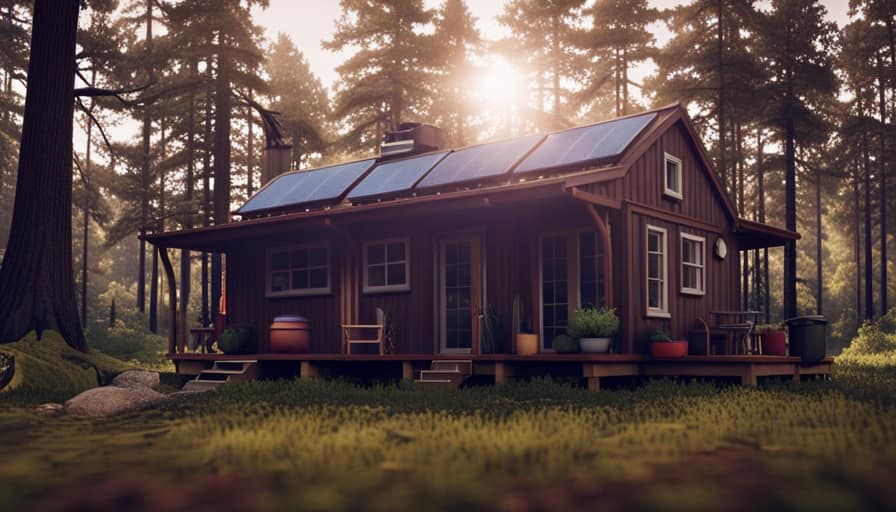
Creative Room-Sharing Ideas for Siblings
One creative room-sharing idea for siblings is to utilize bunk beds to save space in a tiny house. Bunk beds not only provide a comfortable sleeping solution but also create more floor space for play and other activities.
However, if bunk beds aren’t an option for your family, there are alternative solutions to consider. Loft beds or trundle beds are great alternatives that can maximize space while still providing separate sleeping areas.
Additionally, shared closet solutions can help maximize storage space in a shared bedroom. Installing a closet organizer or utilizing hanging storage bags can help each child have their own designated space for clothes and belongings.
By implementing these creative room-sharing ideas, you can create a functional and harmonious living environment for your children in a tiny house.

Now, let’s explore maximizing outdoor space for play and relaxation.
Maximizing Outdoor Space for Play and Relaxation
While it may seem challenging, there are ways to maximize the outdoor space in a tiny house for play and relaxation.
One way is to focus on outdoor activities that require minimal space, such as setting up a small basketball hoop or installing a mini-golf course.
Another option is to create a versatile garden design that can be used for multiple purposes. For example, you can incorporate a play area with a small slide or swing set, as well as a seating area for relaxation.
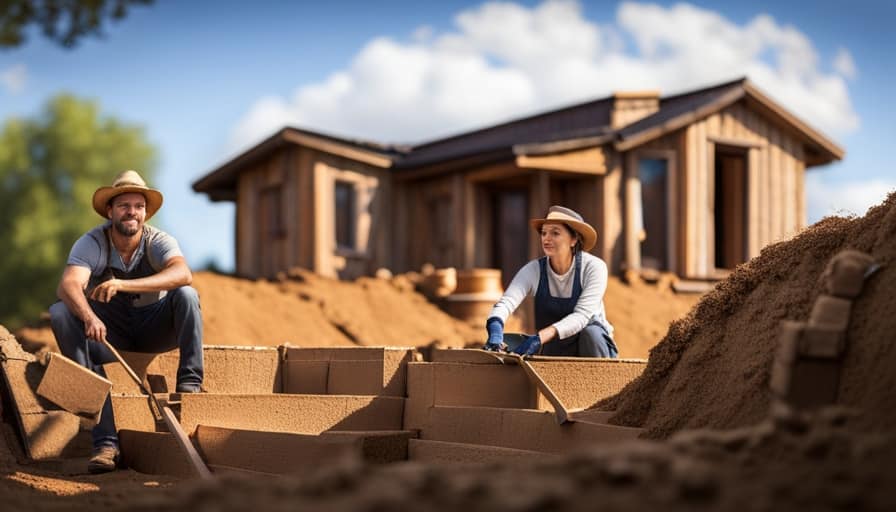
Utilizing vertical space is also key in maximizing outdoor space. You can hang plants or install wall-mounted shelves for storage.
Additionally, using portable furniture that can be easily moved or folded when not in use can help optimize the space.
Efficient Organization and Decluttering Strategies
To effectively manage a large family in a tiny house, it’s essential to implement efficient organization and decluttering strategies. Living a minimalist lifestyle is key to making the most of limited space.
Here are three strategies to help you stay organized and clutter-free:
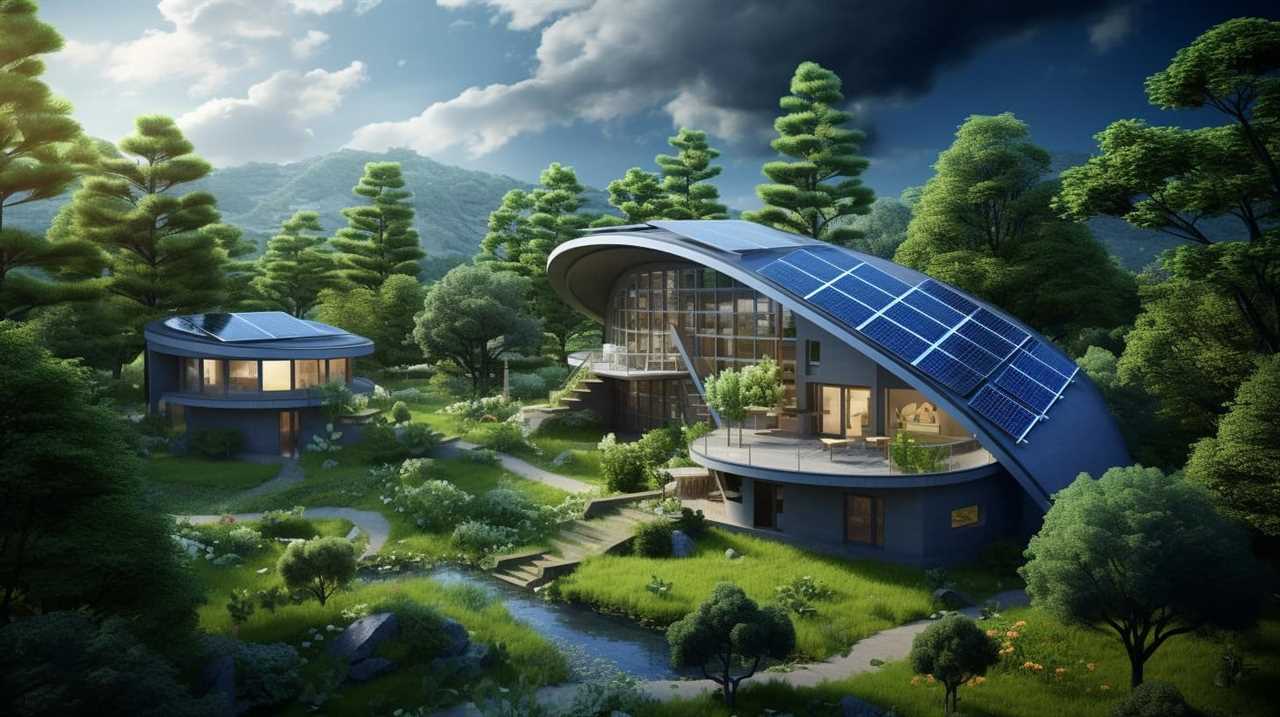
-
Utilize vertical space: Install shelves or hanging organizers on walls to maximize storage. Utilize the space above doorways and under beds for additional storage options.
-
Implement a one-in, one-out rule: For every new item brought into the house, one item must be donated or discarded. This helps prevent clutter from accumulating.
-
Create designated storage areas: Assign specific areas for different categories of items, such as toys, clothing, and kitchen supplies. Use labeled bins or baskets to keep things organized.
By adopting these strategies, you can create a more organized and clutter-free living environment for your large family in a tiny house.
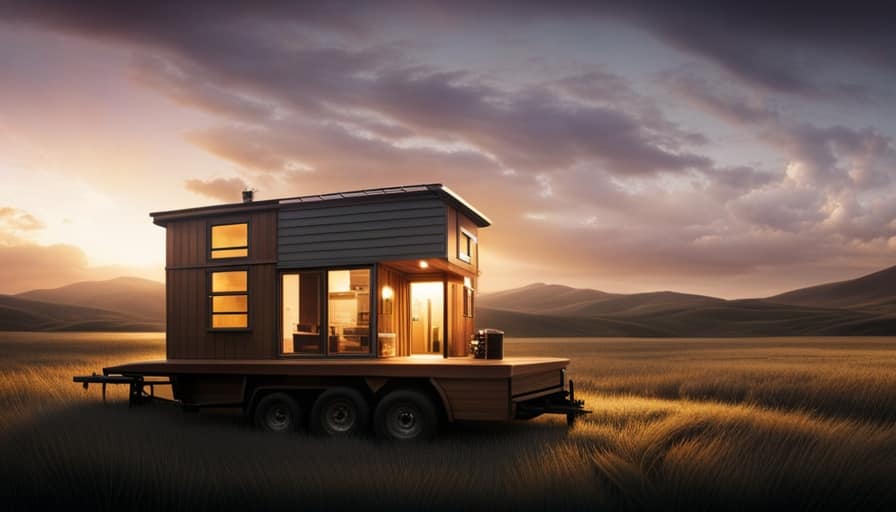
Now let’s move on to tips for creating a functional and comfortable living space.
Tips for Creating a Functional and Comfortable Living Space
By utilizing smart furniture arrangements and maximizing natural light, I can create a functional and comfortable living space for my large family in a tiny house.
One of the key strategies is to choose multi-purpose furniture that serves multiple functions. For example, a sofa bed can be used as seating during the day and transformed into a bed at night. Similarly, a dining table with collapsible sides can be expanded when needed and folded away when not in use.
Another tip is to make use of vertical space by installing shelves and cabinets that go up the walls. This allows for efficient storage of items without taking up valuable floor space.
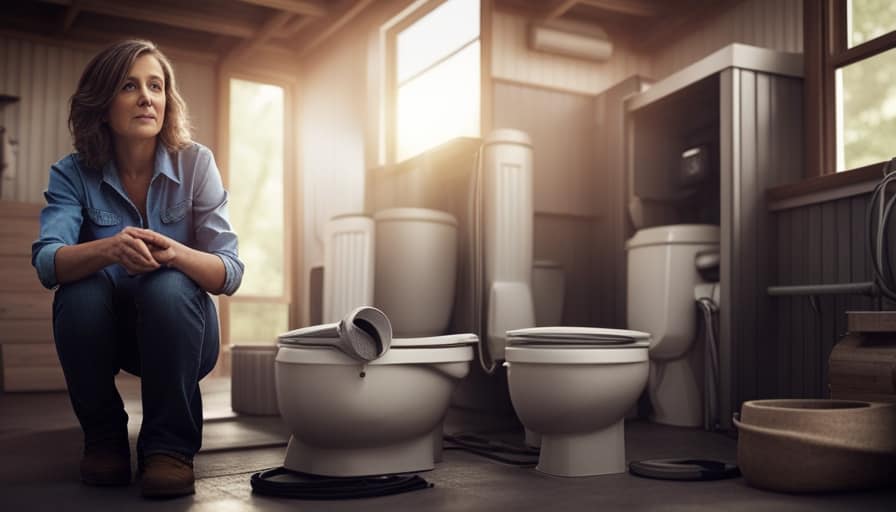
Additionally, incorporating large windows and mirrors can help to maximize natural light and create the illusion of a larger space.
With these strategies in mind, I can create a comfortable and functional living space for my family in our tiny house.
Frequently Asked Questions
How Can I Ensure Privacy for Each Family Member in a Tiny House With Shared Rooms?
Privacy solutions can be maximized in a tiny house with shared rooms by using room dividers, curtains, or furniture placement to create separate areas. It’s important to prioritize each family member’s need for personal space and privacy.
What Are Some Creative Ways to Incorporate Play Areas for Kids in a Tiny House?
To create amazing play areas for kids in a tiny house, get creative with vertical space! Think hanging swings, loft beds with secret forts, and wall-mounted chalkboards. It’s all about maximizing every inch!
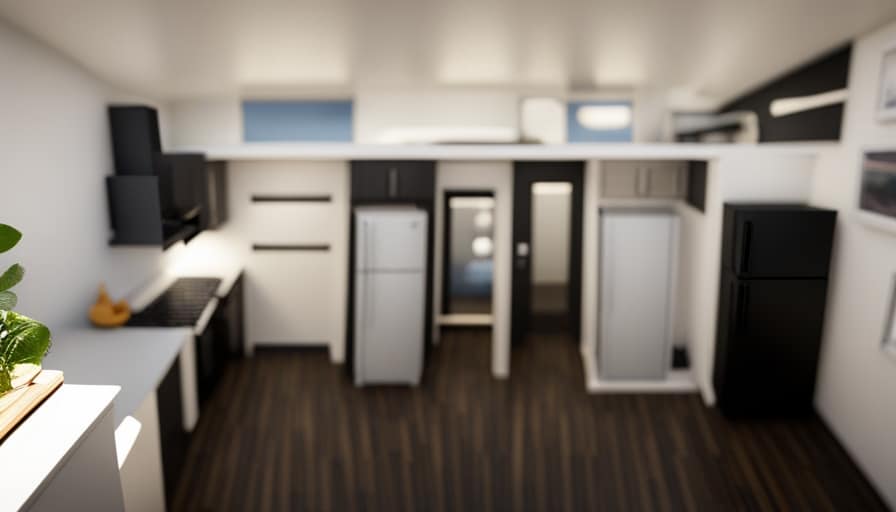
Are There Any Unique Storage Solutions Specifically Designed for Larger Families in Tiny Houses?
There are unique furniture options and creative organization solutions specifically designed for larger families in tiny houses. These can maximize space and provide efficient storage for all the belongings of a big family.
How Do You Manage Laundry and Storage of Clothing Items in a Small Space?
Managing organization and maximizing space in a small house can be challenging, but with creative solutions like utilizing vertical storage, folding clothes efficiently, and implementing a laundry schedule, it becomes manageable.
What Are Some Tips for Maintaining a Sense of Calm and Relaxation in a Tiny House With a Large Family?
Tips for maintaining a sense of calm and relaxation in a tiny house with a large family: create a functional workspace, maximize natural light, and prioritize organization. These strategies help create a peaceful environment for everyone.
Conclusion
So there you have it, folks! Who needs a big fancy house when you can cram your entire family into a tiny one?

With some space-saving furniture, creative room-sharing, and efficient organization, you can make it work.
Just remember to constantly declutter and maximize your outdoor space for some much-needed sanity.
Who needs personal space anyway? Embrace the chaos and enjoy the cozy, cramped life!
I’m Theodore, and I love tiny houses. In fact, I’m the author of Tiny House 43, a book about tiny houses that are also tree houses. I think they’re magical places where imaginations can run wild and adventures are just waiting to happen.
While tree houses are often associated with childhood, they can be the perfect adult retreat. They offer a cozy space to relax and unwind, surrounded by nature. And since they’re typically built on stilts or raised platforms, they offer stunning views that traditional homes simply can’t match.
If you’re looking for a unique and romantic getaway, a tree house tiny house might just be the perfect option.
-

 Beginners Guides1 week ago
Beginners Guides1 week agoHow To Buy A Tesla Tiny House
-

 Energy Efficiency1 month ago
Energy Efficiency1 month agoBest Tiny Homes For Cold Climates
-

 Beginners Guides3 days ago
Beginners Guides3 days agoTiny House Nation Where Are They Now Stephanie
-

 Tiny House Resources (e.g., legalities, cost, insurance, FAQs)2 months ago
Tiny House Resources (e.g., legalities, cost, insurance, FAQs)2 months agoDo Tiny Homes Need Planning Permission?
-

 Beginners Guides2 weeks ago
Beginners Guides2 weeks agoFrom The Show Tiny House Nation How Many Keep Their Tiny House?
-

 Beginners Guides2 months ago
Beginners Guides2 months agoUsing a Climbing Net For Treehouse Construction
-

 Beginners Guides2 months ago
Beginners Guides2 months agoHow to Build a Treehouse Without Drilling Into the Tree
-
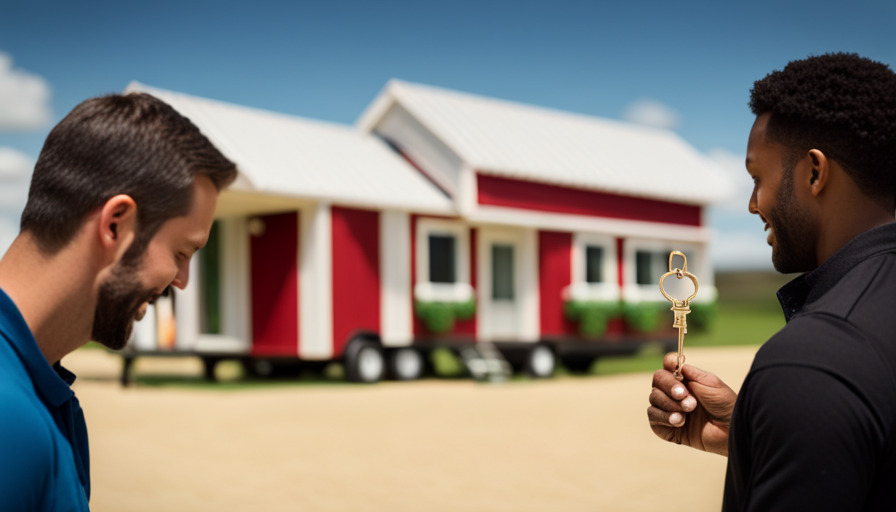
 Beginners Guides2 weeks ago
Beginners Guides2 weeks agoTiny House Nation Who Pays For The Houses






